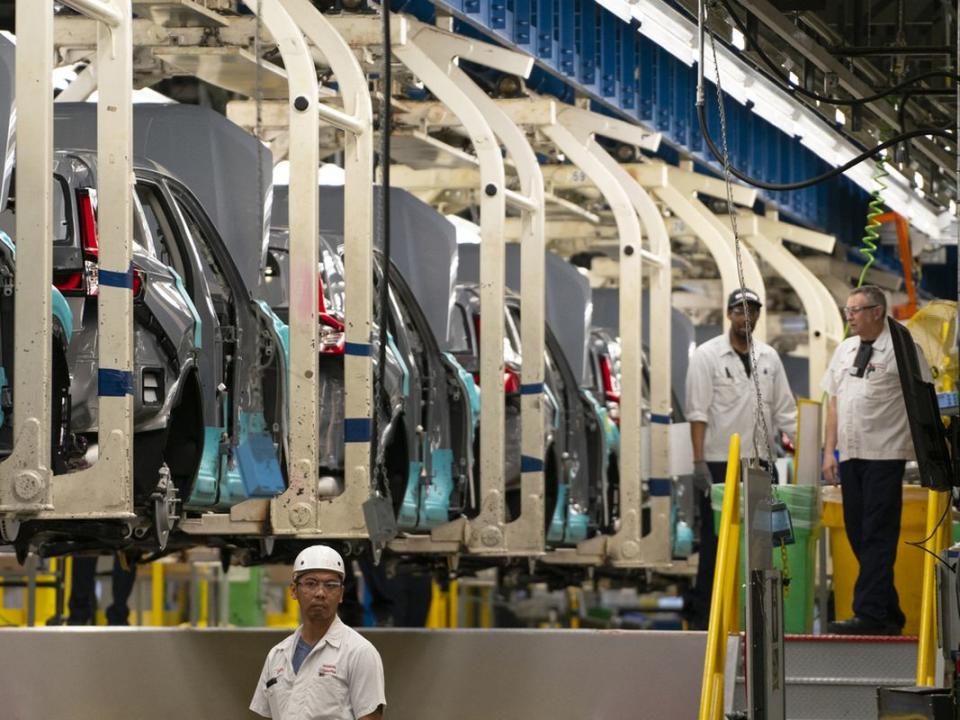William Watson: The future of productivity in Canada looks grim

Suppose it’s 1924. The Olympics are going to be in Paris (though the TV coverage will be sketchier than for this summer’s Paris Olympics). Calvin Coolidge, who took over as president when Warren Harding died a week after visiting Vancouver, is cruising to his first and only election as president, his opposition split between regular Democrats and Progressives. Not that anyone notices presidents much. Mackenzie King is in his first term as prime minister. Canadian prime ministers matter even less than U.S. presidents.
By 1924, the North American economies have recovered nicely from the short, very sharp recession that followed the worldwide influenza epidemic. Prices fell 45 per cent in the U.S. in 1920, but were back to steady not long afterwards. Though you don’t know it yet, real per capita GDP will grow at 2.7 per cent per year for the rest of the Roaring Twenties.
Then somebody asks: How will things look in 1950, 26 years from now?
Do you say, well, I figure the boom will end in 1928 or 1929 with a big stock market crash followed by a severe monetary contraction, a Dust Bowl, the failure of 10,000 U.S. banks, a long, harsh economic depression, and then a second global war in which 50 million people die but from which we get miracle drugs and metals and efficient new manufacturing and communications technologies?
Or do you throw up your hands at the hopeless complexity of it all and plot some lines on log paper to see where different assumptions about growth rates get you when projected out over 26 years? Probably the latter, since your speculation about political and geopolitical changes aren’t worth much more than anyone else’s bar talk.
I thought of all this — quite unfairly, I admit — when reading the latest projection to 2050 from one of the country’s blue-chip forecasters, the subscriber-funded Policy and Economic Analysis Program at the University of Toronto, which has been providing macroeconomic forecasts and analysis for several decades now. As the program’s website says, the idea is to examine “a wide range of possible macroeconomic scenarios” and to test “the sensitivity of scenarios to alternative policy and external developments.”
Fair enough. The future is quite uncertain. Models can help us figure out what happens only subject to different assumptions we impose on them. Nothing more than that.
Scrolling through the latest projections, however, I found myself getting glummer and glummer. The key to any long-term economic forecast is the rate of productivity growth. Most forecasters don’t actually model it but rather make plausible assumptions about its future value.
PEAP’s forecasters have been ratcheting their productivity assumption down over the years. They used to assume 1.7 per cent a year. In 2008, they cut that to 1.5 per cent, then to 1.2 per cent in 2014. And now they’re cutting it again, to 1.0 per cent per year.
If you look at the labour productivity numbers in their charts, however, that’s actually pretty optimistic. From 2001 to 2024, the average annual rate of growth of labour productivity was just 0.46 per cent. From 2010-24 it was 0.55 per cent. Since 2016 it has averaged only 0.13 per cent per year — about one-tenth the forecast value for 2025-50. Productivity is notoriously cyclical: it swings up (and down) as the economy grows faster (or slower). But since 2001 it has reached 1.0 per cent in only six years (the last time in 2014, when it was 2.5 per cent, the only time in the last quarter century it exceeded 2.0).
Assuming 1.0 per cent growth of productivity over the next 26 years is therefore a bit of a stretch. In justifying a further ratcheting down from 1.2 per cent, the PEAP analysts mention the growth in the number of older workers, implying that we Boomers and Late Boomers may not be as susceptible to productivity enhancement as younger folk.
Maybe there’s something to that. In our household we’re having trouble mastering a new TV streaming box (which we’re hoping to do in time for the Olympics.) On the other hand, AI is supposed to be coming. If an AI bot could read through all the books and papers that went into my education — which it could probably do in a second and a half or so — chew on that textual base for a minute or two and then start contributing every fourth paragraph to these ruminations, that would be a dramatic increase in my own productivity. I hope the good folks who run this paper (and they are still folks, I believe, and not yet bots themselves) won’t extrapolate from that to every paragraph, though I suppose even that eventually will be possible.
What’s most depressing about the projections is that little changes. Tax rates and government expenditures, in particular, don’t move much. The feds keep taking 15-16 per cent of GDP off into forever. Without higher productivity there’s no room for cutting taxes.
But does anyone seriously believe productivity will blossom without governments cutting taxes? We may well be stuck in a low-productivity trap, in which low productivity requires high taxes it we’re to pay for public spending, but high taxes perpetuate low productivity.
Where is a fierce and fearless tax-cutter like ex-U.K. PM Liz Truss when we need her?
Financial Post
Bookmark our website and support our journalism: Don’t miss the business news you need to know — add financialpost.com to your bookmarks and sign up for our newsletters here.

 Yahoo Finance
Yahoo Finance 